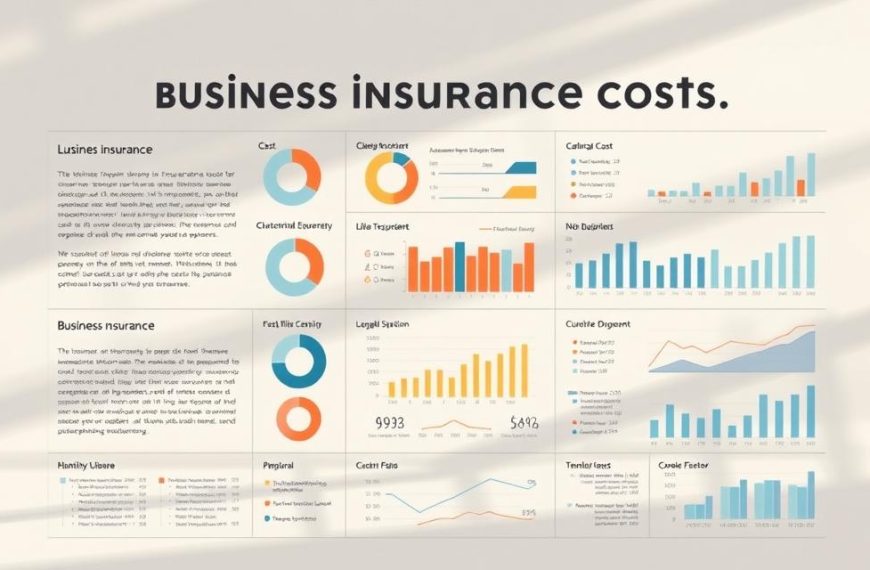Launching a new venture represents a transformative journey filled with opportunities and challenges. While there’s no universal blueprint, adopting a structured approach dramatically improves your likelihood of success. This guide simplifies the complexities of entrepreneurship, offering clear direction for turning ideas into thriving enterprises.
Embarking on this path requires careful consideration of numerous decisions – from legal structures to market positioning. Resources like the U.S. Small Business Administration provide valuable support, but self-directed planning remains crucial. Our 11-stage framework systematically addresses each phase, ensuring no critical element gets overlooked.
Entrepreneurship demands both creativity and pragmatism. While the process may seem daunting initially, breaking it into manageable stages creates momentum. This section outlines why methodical preparation forms the foundation for sustainable growth, helping you avoid common pitfalls.
Whether you’re developing a service or product, understanding core principles streamlines your journey. We’ll explore essential procedures, compliance considerations, and strategic planning techniques that empower new founders. Let’s begin mapping your route from concept to market presence.
Understanding the Basics of Entrepreneurship
Entrepreneurship begins with a fundamental shift in perspective – transforming problems into opportunities. This mindset separates innovators from spectators, enabling individuals to create value where others see obstacles. Successful ventures often emerge from identifying unmet needs or improving existing solutions.
Core Principles and Rewards
Autonomy and creative freedom rank among the top advantages of building enterprises. Unlike traditional employment, founders dictate their schedules and decision-making processes. Financial potential grows with effort, though consistent adaptation remains vital in dynamic markets.
Traditional vs Digital Ventures
Physical establishments require significant upfront investments in locations and staffing. In contrast, e-commerce operations leverage digital tools for global reach with minimal overheads. Recent projections show online sales capturing 20% of U.S. retail by 2027, highlighting shifting consumer preferences.
| Factor | Traditional Model | Online Model |
|---|---|---|
| Startup Costs | High (rent, inventory) | Low (hosting, digital tools) |
| Scalability | Location-dependent | Global reach |
| Operational Flexibility | Fixed hours | 24/7 automation |
While digital platforms offer efficiency, they demand technical know-how and digital marketing skills. Choosing between models depends on target audiences, product types, and personal capabilities. Both paths require dedication, but the strategic advantages differ substantially.
Developing a Viable Business Idea
Transforming personal expertise into marketable solutions forms the core of entrepreneurial success. This process requires balancing self-assessment with industry analysis to uncover opportunities competitors ignore. Profitable ventures often emerge where specialised skills intersect with underserved consumer demands.

Identifying a Niche in Your Industry
Market gaps frequently exist in crowded sectors. The pet supplies sector demonstrates this well – while standard products dominate shelves, niches like organic reptile bedding or anxiety-reducing cat harnesses attract dedicated buyers. Successful founders analyse:
- Customer complaints about existing offerings
- Emerging lifestyle trends (e.g., sustainable pet care)
- Geographical service shortages
| Industry | Common Offerings | Underserved Niches |
|---|---|---|
| Fitness | Gym memberships | Postpartum recovery programmes |
| Home Decor | Mass-produced furniture | Eco-friendly modular designs |
| Food Services | Generic meal kits | Allergy-specific recipe boxes |
Evaluating Your Skills and Market Needs
A pastry chef might spot demand for gluten-free wedding cakes in their area. Similarly, IT professionals could develop cybersecurity workshops for small enterprises. Key evaluation steps include:
- Auditing transferrable capabilities from previous roles
- Researching local service gaps through community forums
- Testing prototypes with focus groups
This alignment between personal strengths and market requirements creates ventures with built-in advantages. Prioritise ideas offering scalable solutions to recurring problems rather than temporary trends.
Conducting Comprehensive Market Research
Validating your concept requires more than intuition – it demands concrete data. Effective market research separates viable opportunities from assumptions, providing actionable insights about consumer behaviour and industry dynamics.
Utilising Keyword Research and Competitor Analysis
Digital tools reveal what potential customers actively seek. Google Trends tracks seasonal interest fluctuations, while keyword planners identify high-volume search terms. Analyse competitors’ pricing structures and product differentiators through their websites and customer reviews.
Social platforms offer real-time feedback. Monitoring hashtags on Instagram or TikTok uncovers emerging preferences. One bakery owner discovered demand for vegan celebration cakes through trending recipe videos, reshaping their menu strategy.
Gathering Customer Insights through Surveys
Structured questionnaires provide direct information from target audiences. Free tools like Google Forms simplify creating surveys with strategic questions:
- Rank preferred product features
- Identify pricing thresholds
- Highlight service expectations
Share surveys in niche forums and local community groups for relevant responses. Combine this data with focus group discussions to uncover deeper motivations. This dual approach strengthens your research validity, ensuring decisions align with actual market needs rather than guesswork.
Creating an Effective Business Plan
A well-crafted business plan acts as both compass and communication tool for stakeholders. It translates abstract ideas into actionable strategies while attracting potential investors. According to the U.S. Small Business Administration, ventures with formal plans grow 30% faster than those without structured guidance.
Begin by articulating your mission statement – a concise declaration of purpose that guides decision-making. This foundation clarifies priorities when evaluating opportunities or addressing challenges. For example, a bakery prioritising artisanal techniques would reject bulk production offers conflicting with its core values.
Defining Your Vision and Strategic Goals
Break long-term aspirations into measurable milestones using SMART criteria. A three-year vision might include:
- Capturing 15% local market share
- Launching two product lines annually
- Achieving £500k annual revenue
| Plan Component | Key Questions | Implementation Timeline |
|---|---|---|
| Market Analysis | Who are primary competitors? What pricing gaps exist? |
Weeks 1-4 |
| Financial Projections | Break-even point? Funding requirements? |
Months 2-3 |
| Marketing Strategy | Customer acquisition cost? Brand positioning? |
Ongoing |
Mapping Out Financial and Marketing Roadmaps
Realistic revenue forecasts require analysing industry benchmarks and startup costs. Include contingency funds for unexpected expenses – 20% buffer recommendations are common. Pair financial planning with promotional tactics, aligning budgets with high-impact channels.
For detailed structuring techniques, consult this comprehensive guide on crafting investor-ready documents. Effective plans balance ambition with data-driven realism, creating pathways for sustainable growth.
Choosing the Right Business Name and Structure
Your venture’s identity and legal protection hinge on two foundational decisions: selecting an effective business name and establishing an appropriate operational framework. These choices influence brand recognition, legal responsibilities, and financial flexibility.
Legal Considerations and Registration Tips
Prioritise names that balance memorability with adaptability. Avoid overly specific terms that might limit future expansion – “London Bakery Delights” restricts geographic or product diversification. Conduct three essential checks:
- State business registries for existing trademarks
- Domain availability (.com and local extensions)
- Social media handle consistency across platforms
Securing matching digital assets prevents brand confusion. Consider potential international expansion by researching global trademark databases if planning overseas operations.
Selecting a Structure: Key Comparisons
Your business structure determines personal liability exposure and tax obligations. This decision impacts daily operations and long-term scalability.
| Structure | Liability Protection | Tax Implications | Setup Complexity |
|---|---|---|---|
| Sole Proprietorship | Unlimited personal liability | Personal tax returns | Minimal paperwork |
| Partnership | Shared unlimited liability | Pass-through taxation | Partnership agreement required |
| LLC | Limited liability protection | Flexible tax options | Moderate registration |
| Corporation | Full liability separation | Double taxation potential | Extensive compliance |
Limited liability companies (LLCs) remain popular for balancing protection with operational simplicity. Consult legal professionals when choosing business frameworks involving multiple stakeholders or complex assets.
Practical Steps: How to Start a Business Legally
Establishing legal compliance forms the bedrock of operational legitimacy. This phase demands meticulous attention to government regulations and tax obligations. Proper documentation shields founders from penalties while enabling smooth interactions with financial institutions.
Essential Tax Documentation Processes
Acquiring an Employer Identification Number (EIN) serves as the primary requirement for hiring staff or opening business accounts. The IRS provides free online applications, typically issuing numbers immediately upon submission. State-level tax registrations vary significantly – California mandates separate seller’s permits for retail operations, while Texas requires franchise tax accounts for certain entities.
Navigating Licence and Permit Requirements
Local authorities dictate specific operational permissions based on business activities. Food vendors need health department certifications, while construction firms require contractor licences. California’s CalGOLD system simplifies this process by matching enterprises with necessary approvals through industry-specific filters.
| Requirement | Federal | State | Notes |
|---|---|---|---|
| EIN | Mandatory | N/A | Free IRS application |
| Sales Tax Permit | N/A | Required in 45 states | Renewal periods vary |
| Professional Licences | Industry-specific | Additional requirements | Check DCA databases |
Ongoing compliance remains crucial as regulations evolve. Subscribe to state business portals for updates about filing deadlines or rule changes. Regular audits ensure documentation stays current, preventing operational disruptions.
Building a Robust Online Presence and Brand
A company’s digital footprint now serves as its primary storefront in an increasingly connected marketplace. Crafting memorable brand experiences requires strategic alignment between technical functionality and emotional resonance. Three pillars form this foundation: intuitive website design, cohesive visual identity, and cultural relevance in target markets.
Developing a User-Friendly Website and Online Store
Platform selection directly impacts customer engagement and conversion rates. Website builders like Wix or Shopify offer drag-and-drop simplicity for rapid launches. WordPress provides greater customisation depth through plugins and themes, while bespoke solutions cater to unique branding needs.
| Platform | Ease of Use | Customisation | Monthly Cost (£) |
|---|---|---|---|
| Shopify | High | Moderate | 25-300 |
| Wix | Very High | Basic | 12-35 |
| WordPress | Medium | Advanced | 8-200+ |
Establishing Consistent Branding and Social Media Profiles
“Your brand isn’t what you say it is – it’s what customers experience,” notes digital strategist Emily Renshaw. Develop style guides specifying:
- Primary/secondary colour hex codes
- Approved typeface combinations
- Tone guidelines for customer interactions
Align social media bios with website messaging using identical profile images and handles. Schedule platform-specific content calendars to maintain regular engagement without repetition.
Optimising for US Market Trends
American consumers prioritise mobile-first experiences – 58% abandon sites with poor mobile layouts. Implement these US-specific tactics:
- Incorporate localised spelling/idioms
- Highlight free shipping thresholds
- Display Trustpilot reviews prominently
Regularly audit site performance using tools like Google’s PageSpeed Insights. Pair technical optimisations with cultural awareness to build credibility in competitive markets.
Organising Funding, Sourcing, and Fulfilment Strategies
Securing financial resources and streamlining operations form the backbone of sustainable enterprise growth. Even modest ventures require strategic funding solutions, whether through personal savings, investor partnerships, or tailored loan programmes. The U.S. Small Business Administration supports specific demographics – including women-owned and rural enterprises – with preferential money access schemes.
Exploring Low-Cost Funding Options
Prioritise bootstrap methods before seeking external capital. Many founders utilise personal savings or revenue reinvestment during initial phases. Government-backed loans often offer favourable terms, particularly for minority-led ventures. Crowdfunding platforms present alternative funding routes while validating market demand through pre-orders.
Establishing a dedicated business bank account simplifies financial tracking and tax compliance. Compare institutions offering fee-free introductory periods or integrated accounting tools. Digital-first banks frequently cater better to small enterprises with flexible overdraft facilities.
Planning Product Sourcing and Inventory Management
First-year expenditure typically centres on material procurement and production. Negotiate bulk pricing with suppliers while maintaining quality benchmarks. Cloud-based inventory systems prevent stockouts by syncing sales data across platforms in real time.
Implement a three-tier plan for financial oversight: monitor cash flow weekly, reconcile accounts monthly, and review quarterly profit trends. This disciplined approach identifies budgetary leaks early, preserving money for strategic reinvestment.















